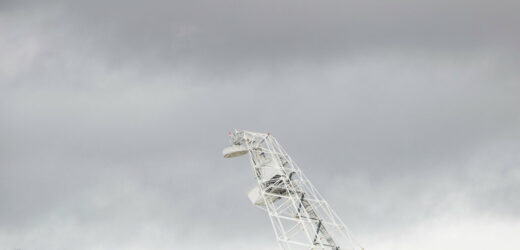In the 1997 movie “Contact,” Jodie Foster plays an astronomer, Ellie Arroway, who detects an alien radio signal from outer space. Eventually the fictional Dr. Arroway goes on a trip through hyperspace to commune with an alien presence appearing in the form of her dead father.
Now it is your turn to be Ms. Foster.
In an act that is one part interplanetary performance art and one part dress rehearsal for an event that astronomers hope will one day occur, a coded radio message from Mars will ping radio telescopes on Earth on Wednesday.
But it will only be a test.
The receipt of this signal is intended to trigger a worldwide game of decrypting and decoding, according to astronomers at the SETI Institute in Mountain View, Calif., which organized the event and is devoted to the search for evidence of extraterrestrial intelligence, mainly in the form of interstellar radio signals. Anybody can follow along on A Sign in Space, a website that will host comments, guesses and weekly workshops on what it all might mean.
In half a century of anxious listening, radio astronomers have yet to hear alien signals sent either intentionally or accidentally from other civilizations. But there are only about 200 billion stars in the Milky Way galaxy left to comb for life, they say.
The message that will be used in Wednesday’s test was designed by a team led by Daniela de Paulis, a media artist and former contemporary dancer who is also a ham radio operator. She is an artist in residence at the SETI Institute and at the Green Bank Observatory, which is home to a giant antenna run by the National Radio Astronomy Observatory, in Green Bank, W.Va. Ms. de Paulis’s work is centered on space, and no one will know what her message says until they decipher it.
If they can.
In 1974, Frank Drake, the father of SETI, designed a message to be beamed into space by the now defunct Arecibo radio antenna. It consisted of 1,679 zeros and ones. When arranged in rows and columns, it formed pictures of a stick man, a DNA helix, numbers and more. None of Dr. Drake’s colleagues at Cornell University, including Carl Sagan, the famed evangelist of extraterrestrial life, could completely decipher it.
Wednesday’s event will start with the ExoMars Trace Gas Orbiter, a robotic explorer operated above Mars by the European Space Agency. The spacecraft will transmit the encoded message at 3 p.m. Eastern time. A quarter of an hour later the signal will arrive at Earth, where three telescopes will be listening for it: the SETI Institute’s Allen Telescope Array in Northern California; the Robert C. Byrd Green Bank Telescope in West Virginia; and the Medicina Radio Astronomical Station near Bologna, Italy.
Teams at each observatory will process the signal and then share it on the experiment’s website. And then all Earthlings can have at it.
“Throughout history, humanity has searched for meaning in powerful and transformative phenomena,” said Ms. de Paulis, in a news release from the SETI Institute. “Receiving a message from an extraterrestrial civilization would be a profoundly transformational experience for all humankind.”
Whether Ms. de Paulis’s experiment on Wednesday is as transformative remains to be seen. But it won’t be the only activity in the coming days devoted to things that may or may not be from beyond this world.
Following the news in recent years that the Pentagon had been investigating reports of unidentified flying objects, NASA appointed a committee to bring scientific standards to the study of what the government prefers to call unidentified anomalous phenomena, or U.A.P.s.
The space agency plans to hold a public meeting on May 31 to discuss the results so far.
Have an out-of-this-world week.
Dennis Overbye joined The Times in 1998, and has been a reporter since 2001. He has written two books: “Lonely Hearts of the Cosmos: The Story of the Scientific Search for the Secret of the Universe” and “Einstein in Love: A Scientific Romance.” @overbye
Source: Read Full Article


